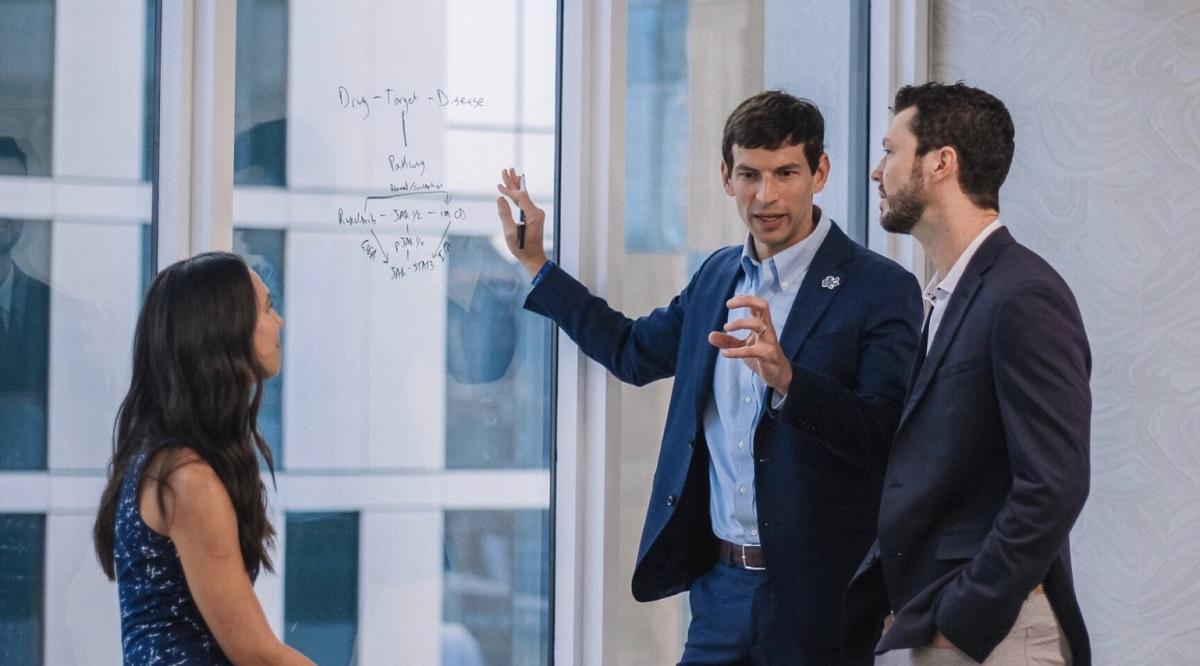No, Really -- There's a Cure For That
"[There is a] treasure trove of medicine that could be used for so many other diseases.""We just didn't have a systematic way of looking at it. It's essentially almost silly not to try this, because these drugs are already approved.""Other laboratory discovery techniques have already put drug repurposing on the map.""A.I. just puts rocket boosters on that."Dr. Donald C. Lo, scientific lead at Remedi4All"This is one example of A.I. that we don't have to fear, that we can be really excited about.""This one's going to help a lot of people."Dr. Grant Mitchell, an Every Cure co-founder"Essentially we ran a query that said, 'Show us every proposed treatment there has ever been in the history of medicine for nausea'.""[The alcohol] popped to the top of our list. It worked instantly.""If you comb through enough drugs, you eventually find the side effect you're looking for And then that becomes the main effect."Dr. Matt Might, professor, University of Alabama, Birmingham"Rare-disease research is challenging for a number of reasons. One problem is clear just in its name: With a rare disease, there are fewer patients for clinical trials, and there’s typically less funding and awareness. There’s also less work that has been done to date, so there’s less to build upon. Science is all about building upon previous work to get the answers you need.""Sometimes there’s data that suggests that an existing drug might work for another disease. But because over 80% of approved drugs are already generic, there’s no profit incentive for drug companies to find new uses for them.""Rare-disease researchers face major challenges. But they also have great opportunities to make a lot of progress."Dr. David Fajgenbaum, American immunologist, author, and co-founder and President of the Castleman Disease Collaborative Network (CDCN)
 |
David Fajgenbaum, MD, MBA, with cofounders of Every Cure, which uses artificial intelligence to determine whether existing medications could work as treatments for diseases that have none. Photo courtesy of Every Cure |
When he was 25 years old and in medical school, Dr. David Fajgenbaum had been diagnosed with Castleman disease, a rare subtype of a disorder, a condition that led to an immune system reaction so severe he was placed in an emergency intensive care unit. There is no treatment for Castleman disease, among its victims some fail to respond to any available treatments, Dr. Fajgenbaum among them. He took the initiative on his own behalf, spending weeks testing his own blood, reading medical literature, attempting unconventional treatments.
"I didn't have a billion dollars and ten years to create some new drug from scratch", he later explained. Eventually he found a generic medication typically scripted for kidney donation recipients in rejection prevention. The medication, sirolimus, has enabled his Castleman disease to remain in remission for over a decade. And Dr. Fajgenbaum became a professor at the University of Pennsylvania, intrigued with the potential of other drugs with unknown usefulness in orphan diseases.
Among other things, his laboratory found a novel cancer drug to help another Castleman patient, a laborious process for which his team had to examine "one drug and one disease at a time". Finally, Dr. Fajgenbaum established Every Cure, a non-profit determined to make use of machine learning, enabling the comparison of thousands of drugs and diseases in instant succession. The lab's platform compares about 4,000 drugs against 18,500 diseases.
Scores based on the likelihood efficacy for each disease are then rated in predictions, with researchers combing through the data to find promising ideas -- following which lab tests can proceed, or alternately connecting with doctors interested in trying the drugs on their patients, unresponsive to other treatments.
Every Cure was funded by $100 million in commitments from the TED Audacious project and the Advanced Research Projects Agency for Health, an agency of the U.S. federal health department.
A drug formulated to work with Parkinson's patients was able to help patients with a neurological condition to finally move and to speak. Dr. Might pointed out that many drugs are capable of performing more than one function; additional features occasionally are characterized as side effects.
A cautionary note came from Dr. Marinka Zitnik, associate professor at Harvard Medical School who studies computer science applications for use in medical research. No model is infallible, she cautioned. Artificial Intelligence can on occasion make predictions "based on evidence that isn't sufficiently strong".
An aggressive drug treatment combination suggested by Dr. Fajgenbaum's model concerned hematologist/oncologist Dr. Wayne Gao, who was troubled that the suggested treatment might even kill a young man in Washington State whom he was set to treat, battling a rare blood disorder that left him with an enlarged heart and failing kidneys.
The 37-year-old felt hopeless. "I gave up. I just thought the end was inevitable", he admitted. But he and his girlfriend knew of the work of Dr. Fajgenbaum and contacted him in Philadelphia. The following day Dr. Fajgenbaum responded suggesting an unconventional combination of chemotherapy, immunotherapy and steroids which had never before been tested as a treatment for the young man's blood disorder ,POEMS syndrome.
Dr. Gao, who treated the young man, felt that since no other treatments were available to consider, he felt finally that "someone had to be the first to try", despite his initial misgivings. And so he did. The young man is now healthy, able to resume his life as it was prior to the disease onset and its disastrous consequences. He had since put on weight, lost while he was in dire failing health. And now he feels "just fine".
 |
Labels: Drug Repurposing, Rare Diseases, Unconventional Medical Treatments

0 Comments:
Post a Comment
<< Home